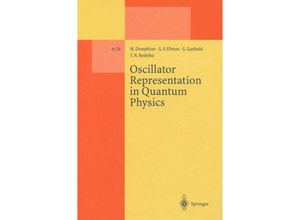The investigation ofmost problems of quantum physics leads to the solution of the Schrodinger
equation with an appropriate interaction Hamiltonian or potential. However the exact solutions
are known for rather a restricted set of potentials so that the standard eternal problem that
faces us is to find the best effective approximation to the exact solution of the Schrodinger
equation under consideration. In the most general form this problem can be formulated as
follows. Let a total Hamiltonian H describing a relativistic (quantum field theory) or a
nonrelativistic (quantum mechanics) system be given. Our problem is to solve the Schrodinger
equation Hlft = Enlftn n i. e. to find the energy spectrum {En} and the proper wave
functions {lft } n including the'ground state or vacuum lft = 10). The main idea of any ap o
proximation technique is to find a decomposition in such a way that Ha describes our physical
system in the closest to H manner and the Schrodinger equation HolJt. (O) = E(O)lJt. (O) n n n
can be solved exactly. The interaction Hamiltonian HI is supposed to give small corrections to
the zero approximation which can be calculated. In this book we shall consider the problem of
a strong coupling regime in quantum field theory calculations ofpath or functional integrals
over the Gaussian measure and spectral problems in quantum mechanics. Let us con sider these
problems briefly.



